The 10 foods high in cancer-causing microplastics... and 'the easy swaps' to avoid them
An expert has revealed 10 foods that are high in microplastics , and 'the easy swaps' that can help you avoid them.
May 21, 2025
An expert has revealed 10 foods that are high in microplastics, and 'the easy swaps' that can help you avoid them.
Scientists issue urgent warning about drinking TEA - as they discover a single tea bag can release billions of dangerous microplastics into your body
Scientists from Universitat Autònoma de Barcelona have warned that a single tea bag can release billions of dangerous microplastics into your body.
During their experiments, the team found that most of these microplastics are taken up by the mucus-producing intestinal cells.
However, they found that some can even enter the cell nucleus - the part of the cell that houses genetic material.
Worryingly, the long-term effects of these microplastics on human health remain unclear.
Scientists from Universitat Autònoma de Barcelona have warned that a single tea bag can release billions of dangerous microplastics into your body
The first type was a nylon teabag, which the researchers ordered from Amazon.
Next, a polypropylene teabag was ordered from AliExpress.
Finally, a third type was bought in a supermarket, but with an unknown filter polymer.
For each teabag type, the researchers transferred 300 teabags into a 1-litre beaker containing 600ml of water at 95°C.
The team found that, across all three types, huge amounts of nano-sized particles were released into the water.
In their new study, the team investigated the microplastics released from three popular teabag types, which can easily be purchased online or in local supermarkets
Humans can be exposed to plastic particles via consumption of food products, drinking water and via the air.
However, the level of human exposure, chronic toxic effect concentrations and underlying mechanisms by which microplastics elicit effects are still not well understood enough in order to make a full assessment of the risks to humans.
There is a growing body of evidence that plastics could play a key role in early-onset cancer genesis, where healthy cells turn cancerous.
Earlier this year, a study found cancer cells in the gut spread at an accelerated rate after contact with microplastics.
Experts have also raised the alarm about a potential between microplastics and reproductive health.
Scientists warned in June that they found tiny plastic particles in men's sperm.
Tiny bits of microplastic, seen here as the black dots, were found in the semen samples of all 36 participants in a Chinese trial
'Beyond environmental exposure, other sources such as food packaging, including herbal/teabags, may also be significant.'
Microplastics are tiny pieces of plastic less than five millimeters long, or smaller than a pencil eraser, which have been linked to cancer, DNA damage, cellular damage and other health issues.
Although most food and drinks stored in plastic containers contain the tiny particles, some products have a higher concentration of microplastics.
Business owner and anti-plastic educator 'Beatrice the Anti-Plastic Lady' shared 10 widely-consumed foods and beverages that are high in microplastics, and revealed alternatives that are safer and healthier.
While seafood has long been known to carry microplastics, she highlighted little-known culprits like specific salts and baby puree pouches.
Beer also made her top 10 list due to the beverage being rewed in different plastic pots.
Beatrice suggested choosing beers that are more filtered or stored in glass instead of a can.
An expert has revealed 10 foods that are high in microplastics , and 'the easy swaps' that can help you avoid them
In general, highly-processed foods tend to contain more microplastics than minimally processed alternatives, like frozen chicken nuggets versus a whole chicken breast.
That is because the more processed a product is, the more it comes in contact with plastic food processing equipment, which creates more opportunities for contamination.
And unsurprisingly, foods packaged in plastic tend to contain more microplastics, especially those that are heated inside their packaging.
As the packaging degrades over time or when it is exposed to heat, it 'leaches' material into the food.
But these aren't the only products that can contain high amounts of plastic particles.
Beatrice listed them in a video on her TikTok (@antiplasticlady), where she posts educational videos about the dangers of plastic pollution and tips to live a more plastic-free lifestyle.
'In the past few years, scientists have linked these microplastics to lots of really toxic impacts on your body, including multiple different types of cancer, accelerated cognitive decline and a generally disrupted gut microbiome,' she added.
1. Seafood
'The amount of microplastics in the ocean has been doubling every six years, and all of that ends up in our seafood,' Beatrice said.
Clams, mussels, crab and nearly every type of fish are a few examples of seafoods that contain 'very high amounts' of microplastics, she explained.
In fact, one study estimated that people who eat large amounts of shellfish ingest about 11,000 microplastic particles each year.
Unfortunately, Beatrice said that seafood is one of the only things on her list that she does not have an easy swap for.
'You might just need to cut back on your consumption and try and avoid highly processed fish when you do eat seafood,' she advised.
2. Salt
Highly-processed American table salt is the safest option when it comes to microplastic contamination.
'Unprocessed sea salt has lots of really high amounts of microplastics,' Beatrice said.
Interestingly, researchers have found that conventional table salt in the US actually has significantly lower amounts of microplastics than more processed salts, such as those used in Asian countries, she explained.
Now cancer-causing microplastics are found in TABLE SALT
The study found there are up to 33 microplastics per kilogram of table salt
That means people could be consuming more than 1,140 particles each year
The innocent table salt you add to your meals is teaming with microplastics, according to a study that comes a week after bottled water was found to be loaded with the toxins.
Average bottle of water contains 240,000 pieces of cancer-causing nanoplastics - 100 times more than previously thought
The world shifted to bottled water due to claims tap water is contaminated
But a new study finds plastic bottles contain more toxic nanoparticles than tap
Researchers at Indonesia's Andalas University sampled 21 table salt brands, finding each contained tiny fragments of plastic, fibers, films and pellets.
The molecules have been linked to the development of cancer, heart disease and dementia, as well as fertility problems.
That is because unrefined salts contain plastic pollution from the oceans they are harvested from, and in this case, processing actually works to remove much of those microplastics.
She noted that pink Himalayan sea salt, popular for its high mineral content and 'health benefits,' is particularly high in microplastics due to the mining methods used to extract it.
Thus, highly processed American table salt is the safest option when it comes to microplastic contamination, Beatrice concluded.
3. Processed conventional dairy
With the exception of salt, 'The farther away a food is from its original source, the more it comes in contact with plastic,' Beatrice said.
Studies have shown that highly processed dairy products such as powdered cheese and conventional milk have much more microplastics than minimally processed alternatives.
'Try and get dairy products that are far less processed. This would be like locally sourced organic milk if possible, as well as raw cheese,' she said.
It's important to note, however, that 'raw,' or unpasteurized, dairy products come with their own health risks.
Eating them can expose you to harmful, sometimes deadly germs such as E.coli, Salmonella and Listeria.
4. Pureed food pouches
Pureed food pouches are cooked and processed in the packaging they are sold in, contaminating the food inside with microplastics
These grab-and-go snacks are popular among young children, but the pouches leach microplastics into the pureed fruits and vegetables inside.
'Heat exponentially increases the amount of toxic chemicals and microplastics that leach into that food. And guess what? Those plastic baby food pouches are all pasteurized and heated in those plastic pouches,' Beatrice said.
'There have now been multiple studies that have found lots of microplastics and adhesive chemicals, multiple bisphenols and phthalates, that exceed the threshold of toxicological concern,' she added.
Her recommendation is to ditch the pouches and give children fresh, unprocessed fruits and vegetables as much as possible.
5. Food in retort foil pouches
These foods, such as tuna, lentil or bean pouches, are cooked inside the retort foil pouches they are sold in, similarly to the baby food pouches, Beatrice said.
Her advice is to 'Avoid. Get dried beans, lentils, cook them yourself and cut back on tuna.'
6. Tea in nylon bags
Nylon mesh tea bags release billions of micro- and nanoplastics into a single cup of tea
Nylon tea bags release tons of microplastics into your hot cup of tea, Beatrice explained.
One study found that steeping a single nylon mesh tea bag in 200° F water releases roughly 11.6 billion microplastics and 3.1 billion nanoplastics — even smaller plastic particles — into a cup of tea.
Nanoplastics are 150 times smaller than a hair, and research suggests they are small enough to get inside human cells.
'Try and instead get loose leaf tea and use a reusable stainless steel strainer, or just use tea in those paper bags,' Beatrice said.
7. Processed meat
Researchers tested the microplastics content in different meat products in American grocery stores, and found that highly-processed products contained the most microplastics per gram.
Now scientists find 90% of all burgers, steaks, chicken and plant-based foods contain cancer-causing microplastics
Americans consume about 11,500 microplastics each year from their food
All 16 protein and plant-based meat studied contained microplastics
These include foods such as breaded shrimp, chicken nuggets and plant-based protein nuggets.
All the proteins tested contained microplastics, Beatrice explained, but the more processed a product was, the more plastic contamination it had.
One top sirloin steak contained 90 rubber particles, while two plant-based beef samples contained 40 and 25 rubber particles.
Scientists at Ocean Conservancy tested 16 types of protein, including chicken nuggets, beef steaks, fish fillets and plant-based burgers, suggesting that humans consume plastics no matter the source of protein they choose
A new study has found that 90 percent of meat and plant-based alternatives Americans consume are loaded with small plastic pieces
Microplastics contamination could be the result of airborne particles or could be shed during food production and distribution, according to the study. Pictured is a plant-based burger being tested
'Try and get products that are just minimally processed,' she advised.
8. Seaweed
Microplastics become trapped on the surface of seaweed, clinging to its tiny crevices and fibers
'This is similar to the concept of how polluted our oceans are,' Beatrice said.
Microplastics become trapped on the surface of seaweed, clinging to its tiny crevices and fibers. One study found that conventional washing methods are ineffective in removing most microplastics from seaweed.
Seaweed is eaten all over the world, but is a predominant staple of Asian diets.
That same study found that Chinese people consume more than 17,000 microplastics per person per year through seaweed consumption alone.
That represents 13 percent of their total annual microplastics intake.
Like seafood, there isn't a clear swap for this food, Beatrice said.
'Try and cut back on your seaweed consumption. Sorry,' she advised.
9. Honey
Researchers have tested honey from all over the world for microplastics, and found that this staple is widely contaminated.
In this case, the microplastic pollution does not come from processing, but rather the bees themselves.
When honeybees forage for pollen in polluted environments, they pick up plastic particles that eventually make their way into the honey.
This is likely why one study found that honey made in urban environments contained far more microplastics than honey made in rural environments.
'Try and get one that's from a more rural place, don't get urban honey,' Beatrice said.
10. Beer
Multiple studies have found microplastics in numerous types of beer, including 12 different American brands made with water from the Great Lakes
'Processing a beer involves brewing hops with hot liquid... A lot of the time they use lots of different plastic materials in order to brew the beer,' Beatrice said.
But the microplastics content is 'not actually correlated to the amount of microplastics in the water supply that they're using,' Beatrice explained.
Similar to table salt, studies found that some of the bigger, highly processed brands contained fewer microplastics due to the amount of filtration the beer went through after it was brewed, she said.
Other studies found that German beers tend to have particularly high amounts if microplastics.
'Try and get one in a glass bottle, getting one in a can certainly isn't going to help,' Beatrice said. 'And if you go for one of the larger brands, or try and go for one that has been more filtered when you drink beer.'
READ MORE:
Study: Humans consume over 1,000 microplastics particles every year through TABLE SALT
New study reveals microplastic chemicals can enter the human body through sweat
Microplastic in the Brain Linked to Dementia
Microplastics Found in Male Reproductive Organs for the First Time: Study
Your support is crucial in exposing fake news and in helping us defeat mass censorship.

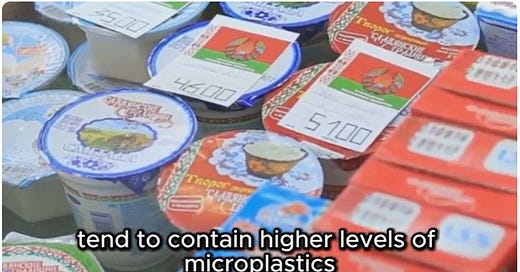



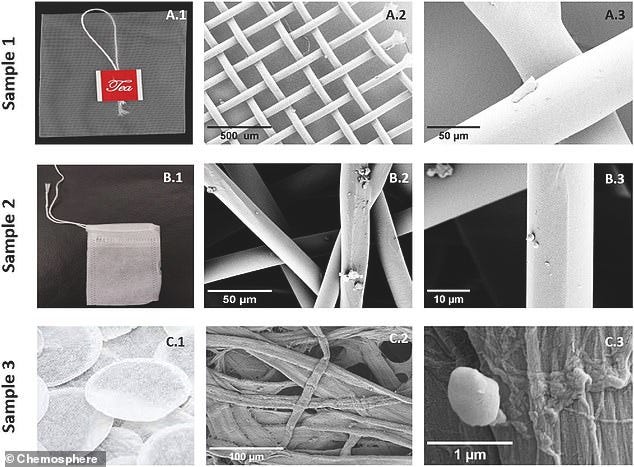
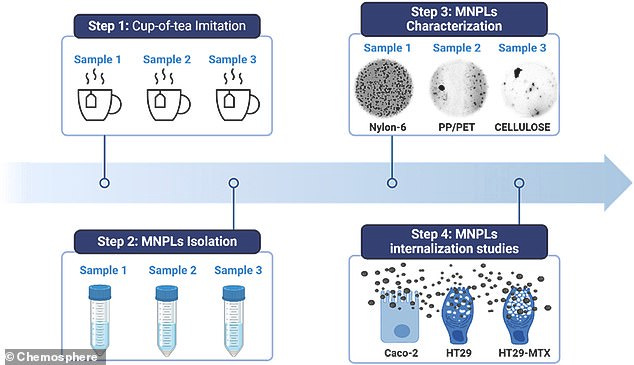
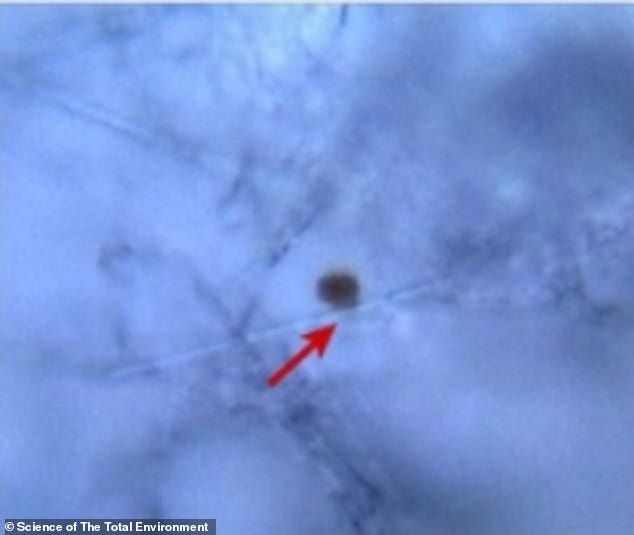

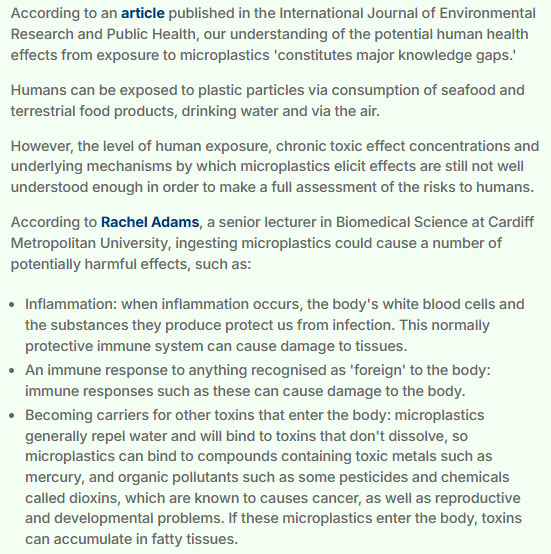

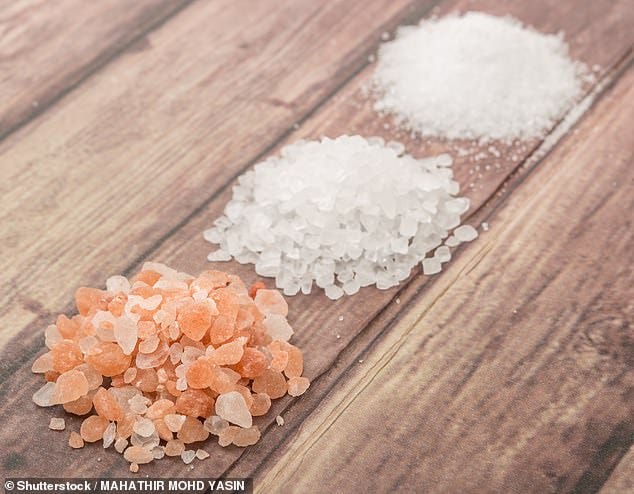


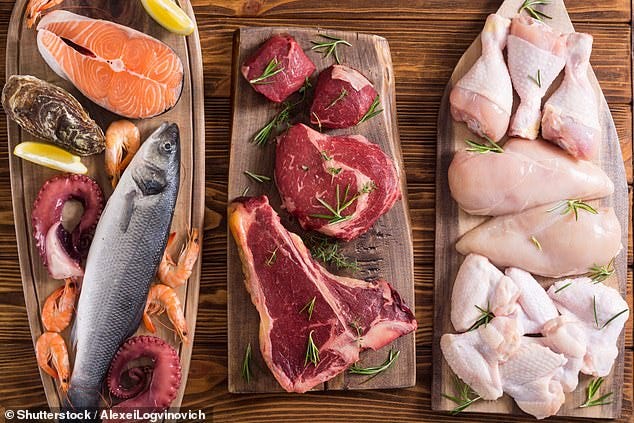
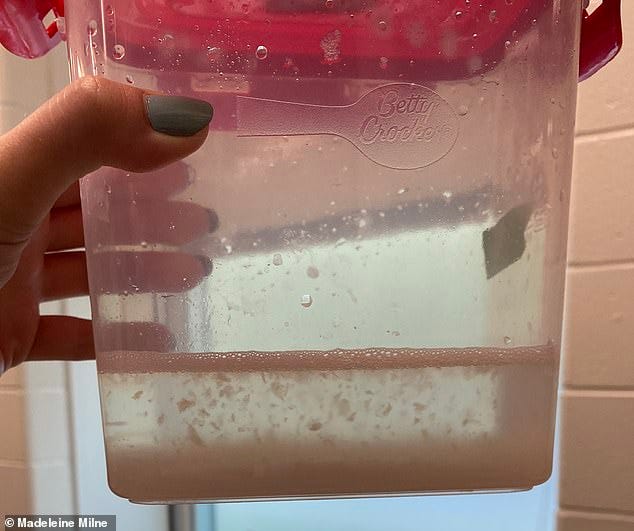
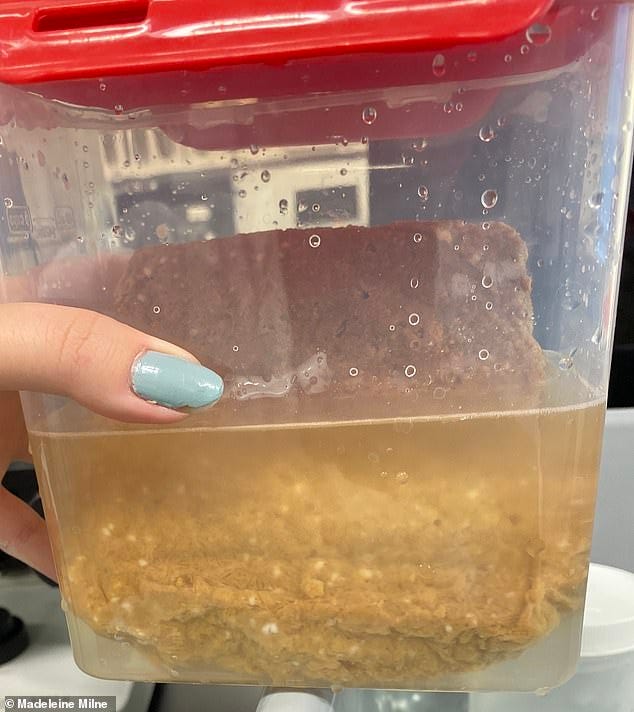
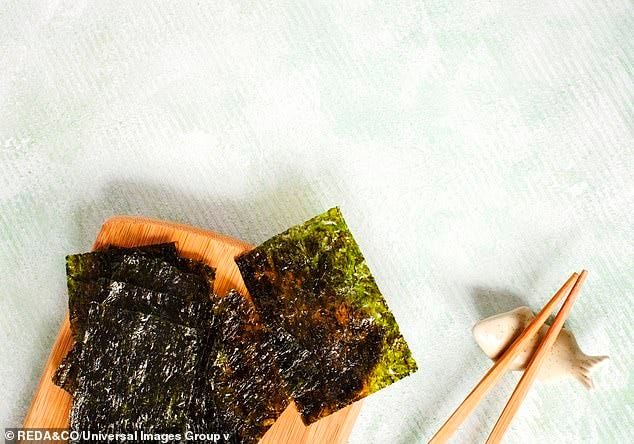
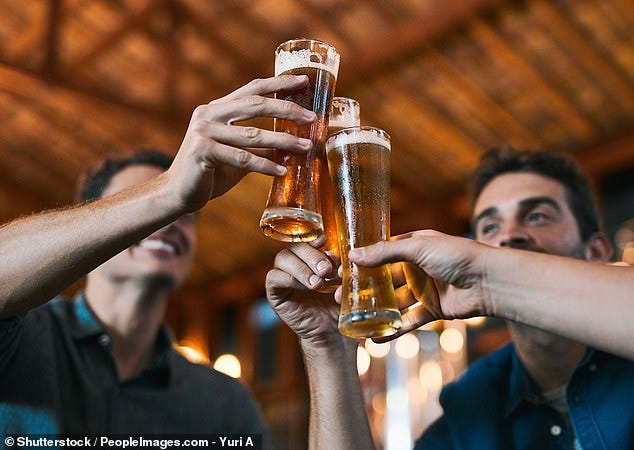

Seems our now Globalist led industries really do not give an expletive about the health of their paying customers and are doing diddly squat in cleaning up their act. While they are researching this health crime look into the alum contamination coming from heavy doses of toxic chemicals being dropped upon the populations, water courses and agricultural ground doing god knows what additional damage to everything and everybody.
You are 💯correct 🔥😎💪